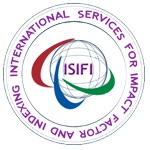Using Learning Management Systems in an Internet of things (IOT) Smartphone Device Amidst COVID-19 Crisis
Pdf : 18 Views Download
Citation: Dr. Froilan D. Mobo, â€Using Learning Management Systems in an Internet of things (IOT) Smartphone Device Amidst COVID-19 Crisisâ€. American Research Journal of Computer Science and Information Technology, vol 4, no. 1, 2020, pp. 1-3.
Copyright Froilan D. Mobo. This is an open access article distributed under the Creative Commons Attribution License, which permits unrestricted use, distribution, and reproduction in any medium, provided the original work is properly cited.
Abstract:
Technology arises today the viable to use an Educational Technology tool can be done in an internet-based system especially on the current pandemic crisis-COVID-19 we are facing. The Researcher is thinking of integrating the existing Learning Management System (LMS) in an IoT SMARTPHONE Device, the reason behind this study is its accessibility and mobility wherever you are you for example while you are in your travel you can still access LMS via SMARTPHONE Device and then from there you can remind or send some information or data needed to be uploaded in the Systems accessible by the students in any learning platform. IoT implementation influences on decreasing healthcare costs and improve handling outcomes of the COVID-19 infected patient. Therefore, the study also attempted to explore, discuss, and highlight the overall applications of the IoT philosophy by offering a perspective roadmap to tackle the COVID-19 pandemic, (Singh, Javaid, Haleem, & Suman 2020). Several useful technologies that IoT helps proper controlling and management of COVID-19 pandemic and these have been discussed in other studies as well. These technologies have IoT could also help in the detection and diagnosis of COVID-19 and other health-related problems and symptoms. (Javaid, et al. 2020). The study aims to diagnose COVID-19 earlier and to improve its treatment by applying medical technology, the COVID-19 Intelligent Diagnosis and Treatment Assistant Program based on the Internet of Things (IoT) Application. The Application can be implemented in real-time online communication using the “cloudâ€. (San, et al. 2020). This only means that the outbreak gains ground in other countries, leading towards a global health emergency and as a global partnership is required in numerous quarters. However, while effective protocols regarding the sharing of health data are given emphasized, on the other hand, specifically relating to health and safe city concepts, is still viewed from an expert perspective as exclusively benefiting a nation’s economy and its economic and political influence, (Allam & Jones 2020). Further research must be conceded out for the development of automated and effective IoT Application with Learning Management Systems in Smart Watches to provide early and timely detection of outbreaks of such diseases to reduce illness mortality and prevent worldwide spread, (Rahman, et al. 2020).KEYWORDS:Internet of Things (IoT), Covid-19, SMARTPHONE Device, Learning Management System
Description:
Introduction
Technology arises today the viable to use an Educational Technology tool can be done in an internet-based system especially on the current pandemic crisis-COVID-19 we are facing. The Researcher is thinking of integrating the existing Learning Management System (LMS) in an IoT SMARTPHONE Device, the reason behind this study is its accessibility and mobility wherever you are you for example while you are in your travel you can still access LMS via SMARTPHONE Device and then from there you can remind or send some information or data needed to be uploaded in the Systems accessible by the students in any learning platform. IoT implementation influences on decreasing healthcare costs and improve handling outcomes of the COVID-19 infected patient.
Therefore, the study also attempted to explore, discuss, and highlight the overall applications of the IoT philosophy by offering a perspective roadmap to tackle the COVID-19 pandemic, (Singh, Javaid, Haleem, & Suman 2020).Figure 1 shows the interconnection of the Input-Process-Output of the LMS and IoT SMARTPHONE Device.
Methods and Procedure:
To provide and gather as much informative and relative evaluation descriptive research method and qualitative method will be used. This method includes the use of a questionnaire using Google forms and interviews via zoom since there is a need to practice social distancing. A questionnaire was used as the main data gathering instrument for this study using Google Forms. Several useful technologies that IoT helps proper controlling and management of COVID-19 pandemic and these have been discussed in other studies as well. These technologies have IoT could also help in the detection, and diagnosis of COVID-19 and other health-related problems and symptoms, (Javaid, et al. 2020). The researcher will be using a qualitative statistical treatment such as averages, percentages, and quotas in interpreting the perception of each respondent.
Discussion: The Findings aim to identify the possibility of combining the Learning Management Systems and the Internet of things (IoT) earlier and to improve, the COVID-19 Intelligent Diagnosis and Treatment Assistant Program based on the
Internet of Things (IoT) Application. The Application can be
implemented in real-time online communication using the “cloudâ€.
(Bai, et al. 2020). This only means that the outbreak gains ground in
other countries, leading towards a global health emergency and
as a global partnership is required in numerous quarters and a
study shows that using Any Learning Management System Platforms
may:Table 1: shows that there are 320 Cadets in those who
colleges, PMMA Marine Engineering Cadets, 270 (84.38) and
CelTech Marine Engineering and Marine Transportation Cadets
there are 50 (15.63), who are using the Learning Management
System as an alternative learning. Figure 2 shows that there are
320 Cadets in those who colleges, PMMA Marine Engineering
Cadets, 270 (84.38) and CelTech Marine Engineering and Marine
Transportation Cadets there are 50 (15.62), who are using the
Learning Management System as an alternative learning in
graphical representation.
Results and Conclusion:
This only means that the outbreak gains ground in other countries, leading towards a global health emergency and as a global partnership is required in numerous quarters that is why it is highly recommended to implement the usage of the Learning Management Systems. However, while effective protocols regarding the sharing of health data are given emphasized, on the other hand, specifically relating to health and safe city concepts, is still viewed from an expert perspective as exclusively benefiting a nation’s economy and its economic and political influence, (Allam & Jones 2020). Further research must be conceded out for the development of automated and effective IoT Application with Learning Management Systems in Smart Watches to provide early and timely detection of outbreaks of such diseases in order to reduce illness mortality and prevent worldwide spread. (Rahman, et al. 2020).
Acknowledgement:
I would like to thank those who morally supported and inspired me to write this article namely:
1. Kenneth Froy Angelo Mobo
2. Ana Liza R. Garcia
3. Rev. Fr. William Monsalud
4. Marijoy S. Pagal
5. My IKSAD Family
Without them, I wouldn’t be able to finish this article.
References
1.Allam, Zaheer, and David S. Jones. “On the Coronavirus (COVID-19) Outbreak and the Smart City Network: Universal Data Sharing Standards Coupled with Artificial Intelligence (AI) to Benefit Urban Health Monitoring and Management.†Healthcare, vol. 8, no. 1, 2020, p. 46., doi:10.3390/healthcare8010046.
2.Bai, Li, et al. “Chinese Experts’ Consensus on the Internet of Things-Aided Diagnosis and Treatment of Coronavirus Disease 2019 (COVID-19).†Clinical EHealth, vol. 3, 2020, pp. 7–15., doi:10.1016/j.ceh.2020.03.001.
3.Javaid, Mohd, et al. “Industry 4.0 Technologies and Their Applications in Fighting COVID-19 Pandemic.†Diabetes & Metabolic Syndrome: Clinical Research & Reviews, vol. 14, no. 4, 2020, pp. 419–422., doi:10.1016/j.dsx.2020.04.032.
4.Rahman, Md. Siddikur, et al. “Defending against the Novel Coronavirus (COVID-19) Outbreak: How Can the Internet of Things (IoT) Help to Save the World?†Health Policy and Technology, 2020, doi:10.1016/j.hlpt.2020.04.005.
5.Singh, Ravi Pratap, et al. “Internet of Things (IoT) Applications to Fight against COVID-19 Pandemic.†Diabetes & Metabolic Syndrome: Clinical Research & Reviews, vol. 14, no. 4, 2020, pp. 521–524., doi:10.1016/j.dsx.2020.04.041.



















